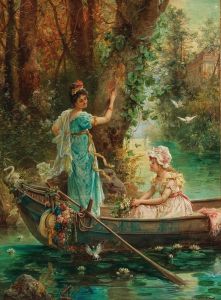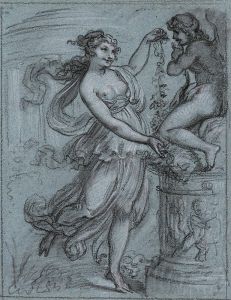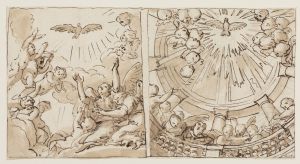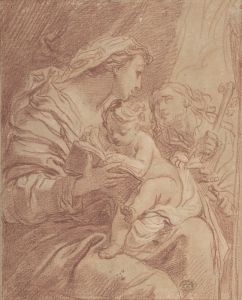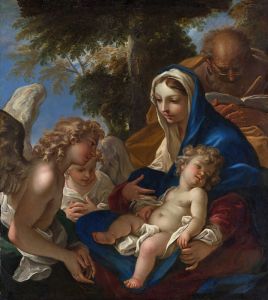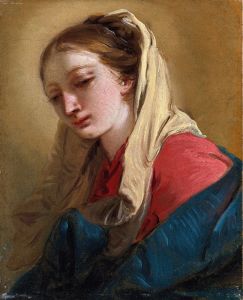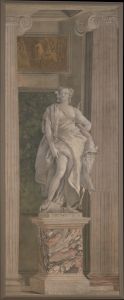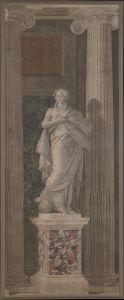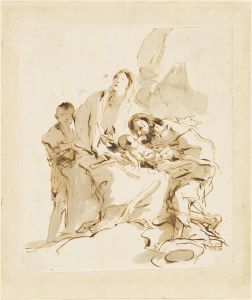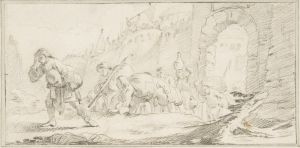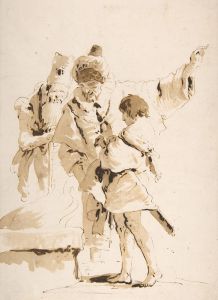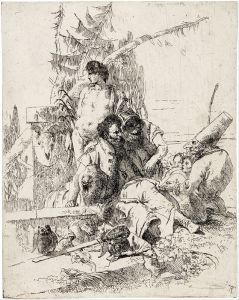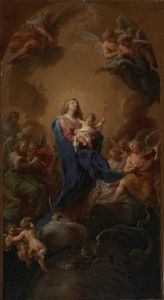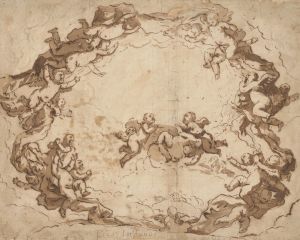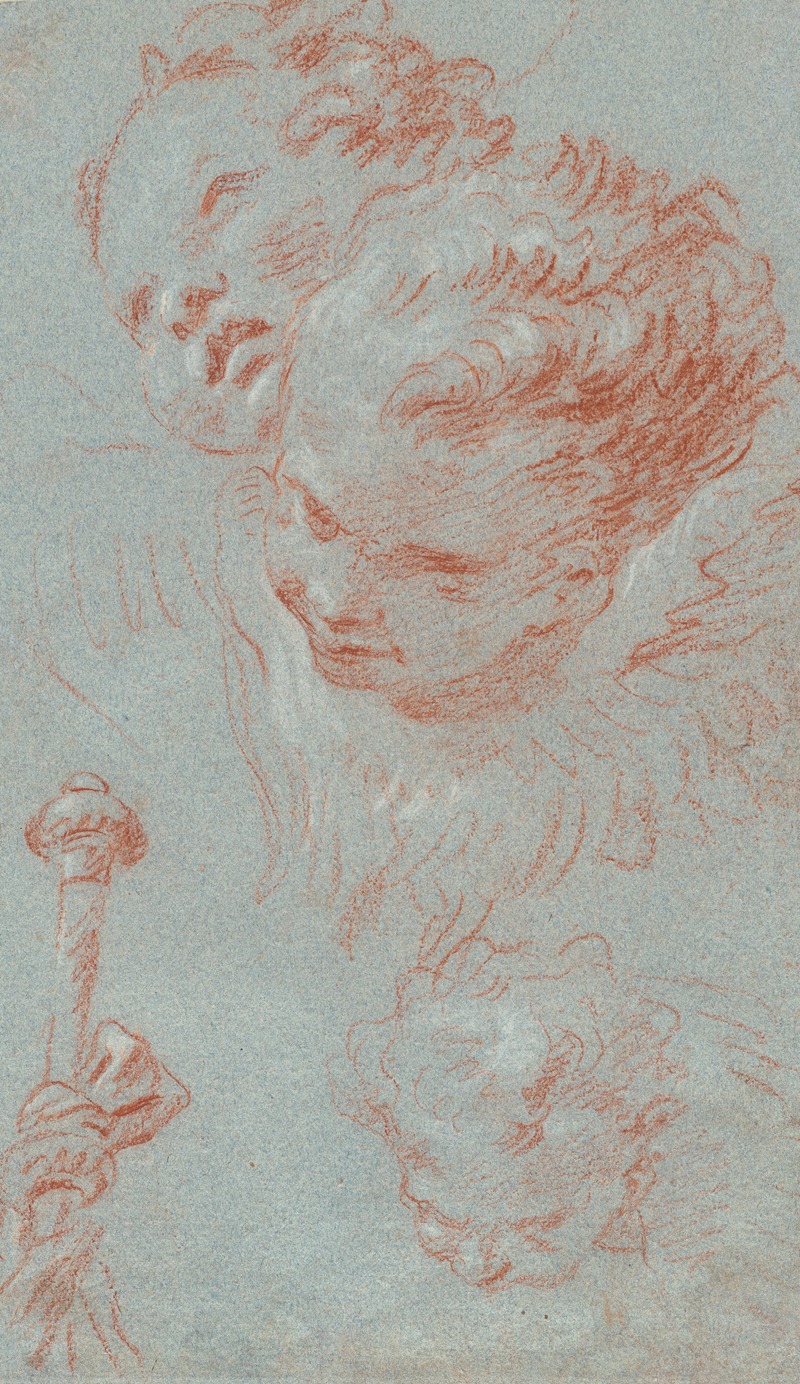
Three Cherubs and a Beribboned Staff
A hand-painted replica of Giovanni Battista Tiepolo’s masterpiece Three Cherubs and a Beribboned Staff, meticulously crafted by professional artists to capture the true essence of the original. Each piece is created with museum-quality canvas and rare mineral pigments, carefully painted by experienced artists with delicate brushstrokes and rich, layered colors to perfectly recreate the texture of the original artwork. Unlike machine-printed reproductions, this hand-painted version brings the painting to life, infused with the artist’s emotions and skill in every stroke. Whether for personal collection or home decoration, it instantly elevates the artistic atmosphere of any space.
Giovanni Battista Tiepolo, an Italian painter and printmaker, is renowned for his distinctive style that epitomizes the grandeur and elegance of the late Baroque period. Among his numerous works, "Three Cherubs and a Beribboned Staff" stands out as a fine example of his mastery in capturing ethereal beauty and dynamic composition.
Tiepolo was born in Venice in 1696 and became one of the most prominent painters of the 18th century. His work is characterized by its lightness, vibrant color palette, and the use of dramatic perspectives. Tiepolo's art often features mythological and religious themes, and he was particularly skilled in creating frescoes that adorned the ceilings and walls of palaces and churches across Europe.
"Three Cherubs and a Beribboned Staff" is a painting that exemplifies Tiepolo's ability to depict celestial figures with grace and movement. The painting features three cherubs, or putti, which are small, chubby, winged children often used in art to symbolize innocence and divine presence. These figures are a common motif in Tiepolo's work, reflecting the artist's fascination with the interplay between the earthly and the divine.
In this artwork, the cherubs are depicted with a sense of buoyancy and playfulness, a hallmark of Tiepolo's style. The composition is dynamic, with the cherubs seemingly in motion, interacting with a staff adorned with ribbons. The ribbons add a sense of movement and fluidity to the piece, enhancing the overall sense of lightness and joy. Tiepolo's use of color is particularly noteworthy; he employs a soft, pastel palette that imbues the scene with a dreamlike quality.
The painting is a testament to Tiepolo's skill in creating a sense of depth and space. His use of chiaroscuro, the contrast between light and dark, adds dimension to the figures, making them appear almost three-dimensional. This technique, combined with his adept handling of perspective, draws the viewer into the scene, creating an immersive experience.
Tiepolo's work was highly sought after during his lifetime, and he received commissions from patrons across Europe, including in Germany and Spain. His ability to blend traditional Baroque elements with a lighter, more playful touch made his work appealing to a wide audience. "Three Cherubs and a Beribboned Staff" reflects this blend, showcasing Tiepolo's unique approach to composition and his ability to convey emotion through his art.
The painting is also indicative of the broader artistic trends of the 18th century, a period marked by a transition from the grandeur of the Baroque to the more ornate and decorative Rococo style. Tiepolo's work bridges these two movements, retaining the dramatic flair of the Baroque while incorporating the elegance and lightness of the Rococo.
Today, Tiepolo is celebrated as one of the great masters of his time, and his works continue to be studied and admired for their technical brilliance and artistic innovation. "Three Cherubs and a Beribboned Staff" remains a significant piece within his oeuvre, exemplifying the qualities that define Tiepolo's enduring legacy in the world of art.





